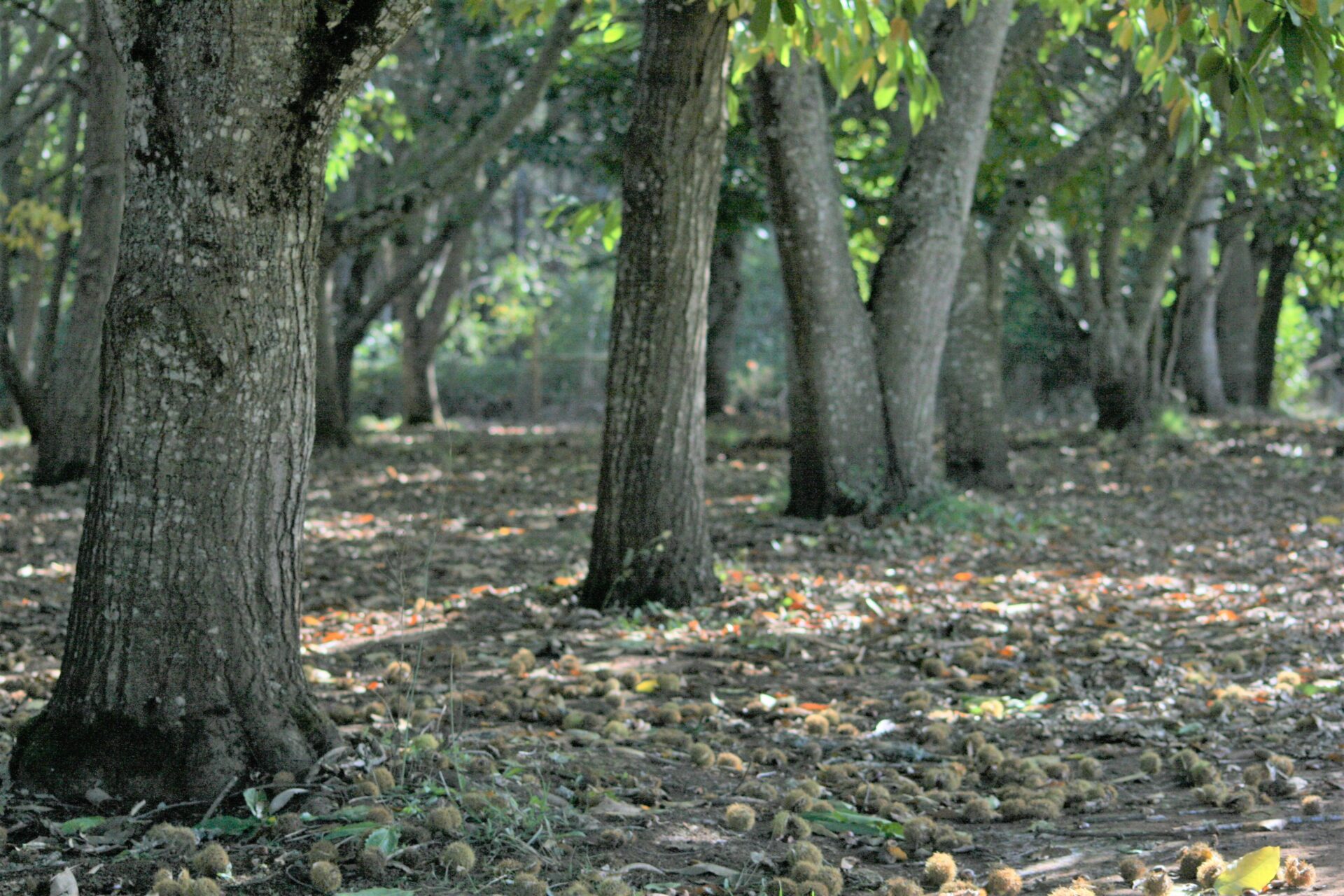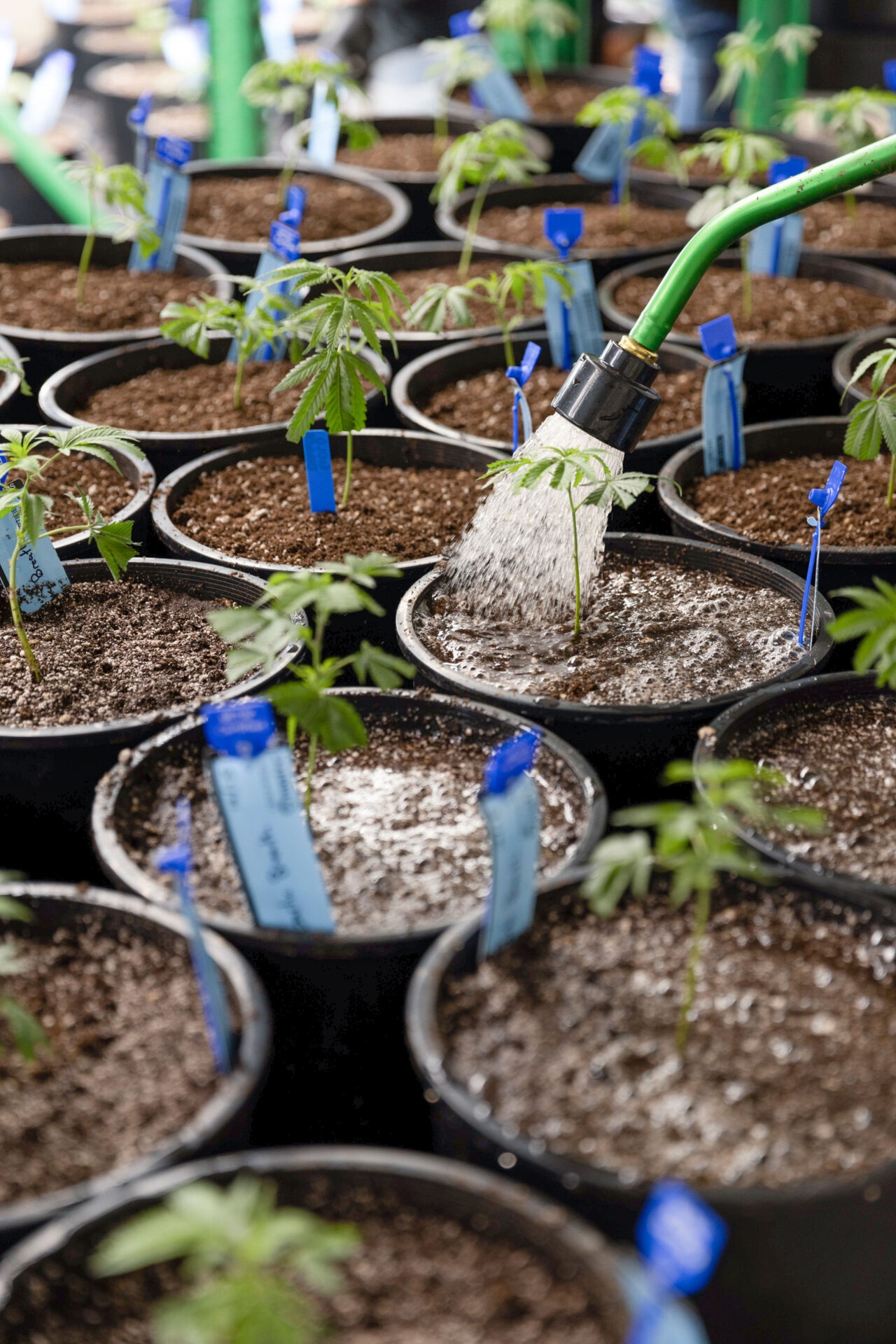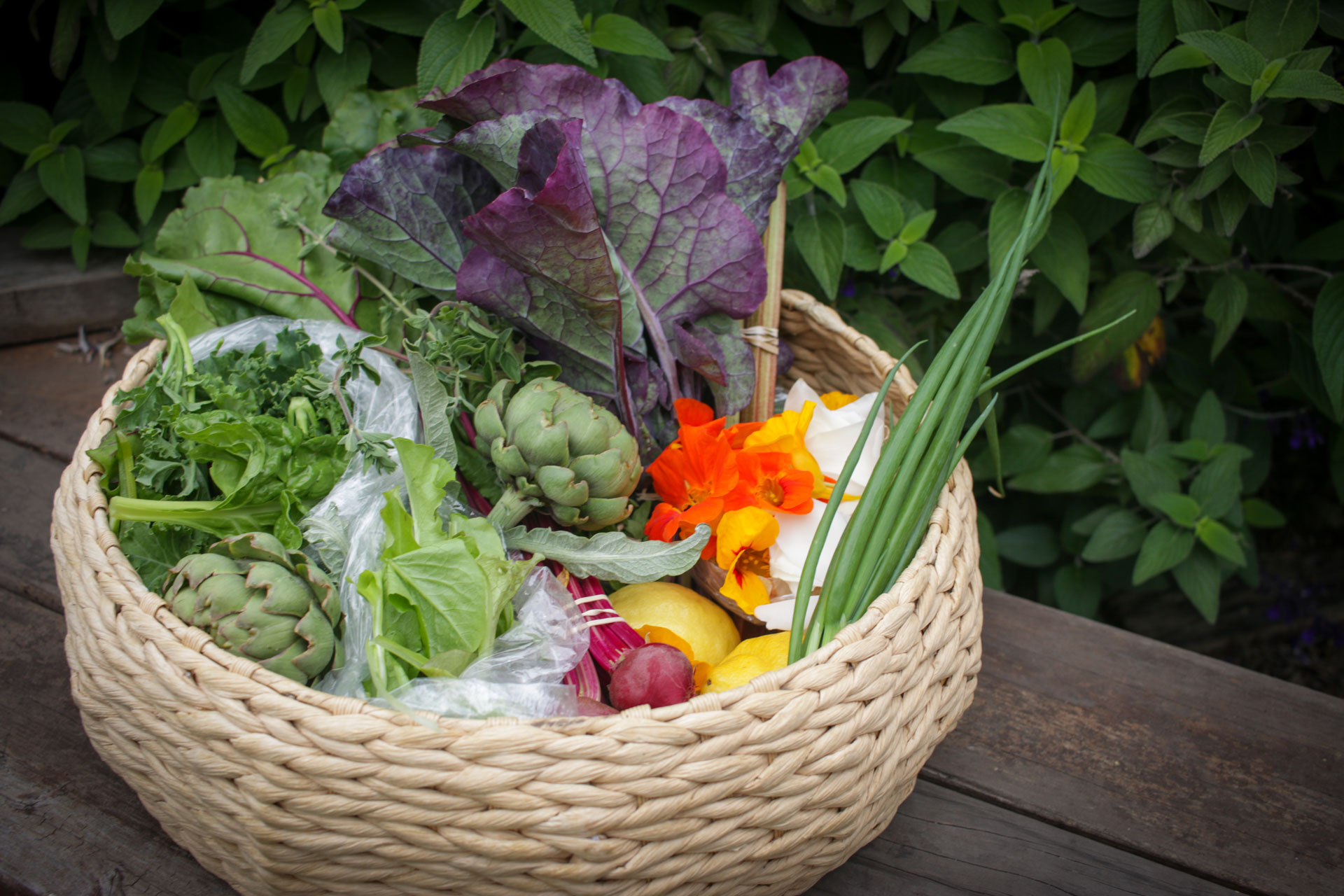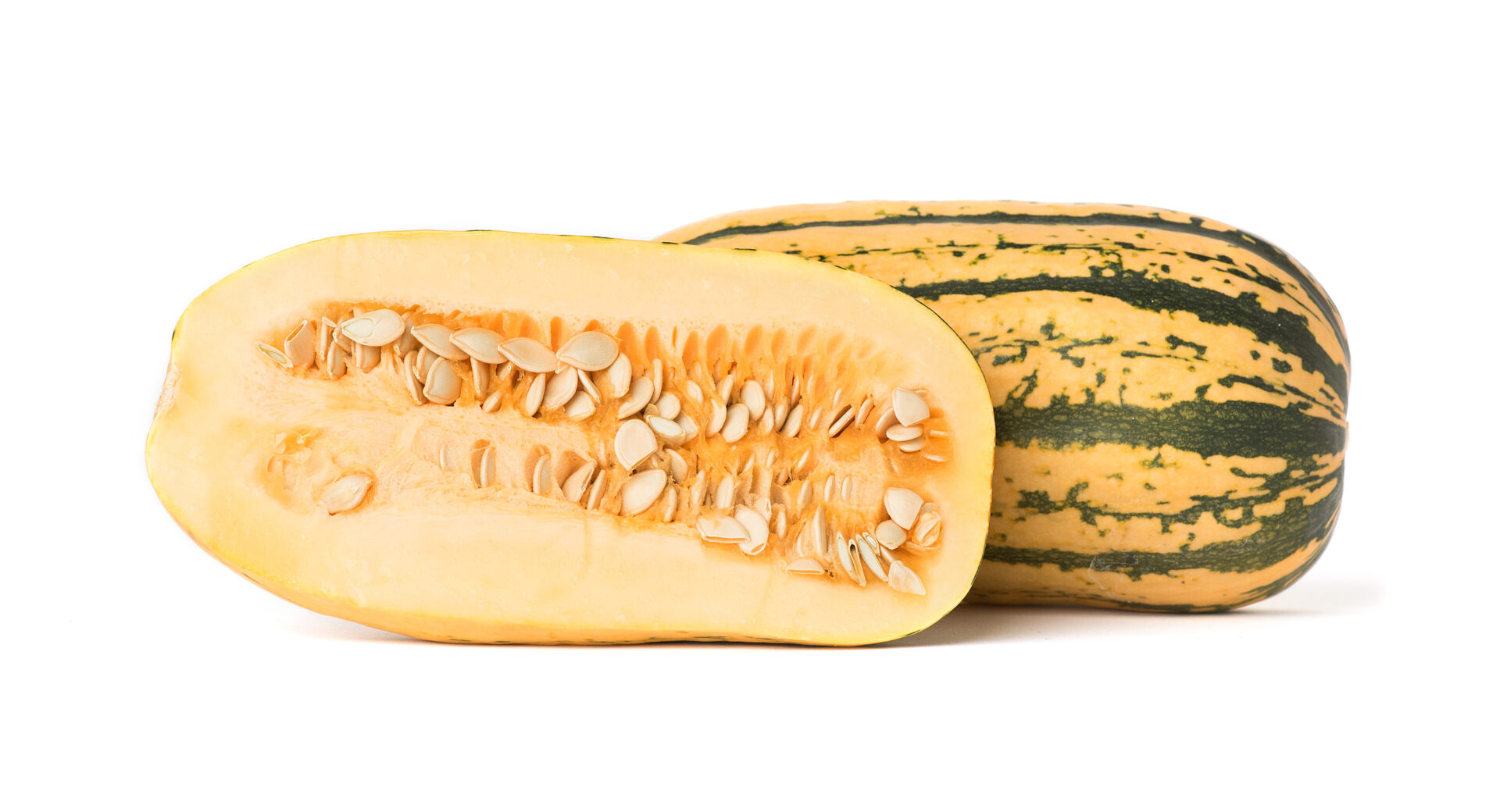Chestnut trees once filled the forests in the Eastern U.S. In the fall, people looked forward to collecting the nuts that littered the forest floor. They roasted the chestnuts or used them to stuff their holiday turkeys. At the turn of the 20th century, the chestnut blight hit. No one is positive who imported the original blighted tree or seed from Japan, but the lethal fungal disease was first discovered in 1904 in New York City. By that time, nurserymen had shipped Asian chestnut trees all over the states. Within 50 years, the blight had forever altered the Eastern U.S. forests. What had once been an important forest tree was reduced to a multi-branched shrub that rarely produced nuts.
The blight die-out especially affected the great chestnut forests of the Appalachian Mountains and the people that lived there. It caused a big problem in the mountain people’s food chain. It wasn’t only the loss of nuts as a food source for the human residents; it was a loss of food for the forest animals that depended on the high-carbohydrate fall nuts. The Appalachian people also depended on those animals as food for their tables.
Western Growers
Living and farming in western states is a definite pro as far as growing chestnuts. California, Oregon and Washington are largely a chestnut blight-free environment. Growers here can even plant blight–susceptible European chestnut (C. sativa) and their hybrids (C. sativa x C. crenata), according to Michigan State University Extension.
Carol Porter is one such western grower. She got interested in growing chestnuts after reading an article about them in National Geographic. That was in the 1980s when Oregon State University (OSU) was giving seminars trying to bring back the chestnut. When chestnuts didn’t catch on with enough growers, OSU’s chestnut research dwindled.
But Porter stuck with it. She and her late husband, Bill, planted 12 acres of chestnut trees in a back area of their Sweet Home, Ore. property. They put in dripline with headers to each tree. For the first seven years, the Porters irrigated their trees. Once the taproot found water, Porter said, the trees no longer needed irrigation.

Pests and Diseases
Plant chestnuts in well-drained soils to prevent fungal root disease. Stay away from wet soils that are low in oxygen. If Phytophthora root rot takes hold, it affects the roots and crown of a tree (the area where roots and trunk meet.) The disease can be transported on nursery stock or may already exist in soil from other trees. Chestnuts may die in wet soil, even without root rot. They simply do not do well in poorly drained soil. If your soil contains a lot of clay, amend it with copious amounts of compost and plant trees on mounds or slopes.
To prevent sunscald, paint trucks with white paint.
European shothole borer (Xyleborus dispar Fabricius), also known as the pear blight borer, is the main chestnut borer pest in the Pacific Northwest. The small, dark-brown beetles attack the bark of weakened branches. The larvae are white, legless and about 0.16 inches long. They overwinter as adults. When the many adult female beetles emerge during the first warm days of late winter or early spring, they leave behind holes in the bark that resemble buckshot damage. The male is flightless and stays behind in the tree. Although these beetles mostly attack injured, weakened and stressed plants, they may also attack healthy trees that grow near blocks of infected trees.
To help prevent shothole borer infestation, avoid planting chestnuts near abandoned orchards, recent clearcuts or unhealthy forests. Protect against sunburn. Cut out damaged branches and burn them.
As far as chestnut nutrition needs go, do a soil analysis in the spring followed by a tissue test in July or August. If potash is needed, apply in fall so winter rains carry it down to the roots.
Porter has had few issues with her chestnuts, except for animal pests.
“I was kind of naïve,” Porter said. “I don’t remember anyone telling me that every creature likes the nuts.”
Deer, elk, squirrels, turkeys and other birds devoured her chestnuts. She searched for a solution and was told by experts there were two things she could do: Build a tall fence to keep out at least the bigger animals and plant an orchard closer to the house where human activity would help keep animals at bay. Porter did both. Between 1994 and 1995, she planted a new orchard within view of her house and fenced it. She planted 173 trees on a 50 X 50-foot grid in the three-acre block. The trees began producing after seven to eight years, which was also when she quit irrigating them.

Marketing
Although Porter started out planting the colossal variety for their kernels and the Nevada variety as pollinators, she has discovered that she prefers Nevada. Colossal is a Japanese-European hybrid. Its nuts are large, but they tend to have several smallish kernels in each shell. Nevada is a medium-sized nut, with only one larger kernel inside. Porter said Nevada nuts are sweeter. The nuts she sells to the public equal 15 to 16 per pound in size.
Porter and her late husband previously raised cattle in Colorado. In Sweet Home, Porter raises cattle and hogs. She feeds any small or split chestnuts to the livestock. At the local farmer’s market, she sells USDA beef and pork along with chestnuts. Porter has a liquor license, and sometimes she sells chestnut beer made by a Portland microbrewery that buys nuts from her. She connected with the brewer because he was looking for a gluten-free beer to offer customers along with the gluten-free menu items at his restaurant.
Porter and Randy Coleman of RC Farms in McMinnville, Ore. started West Coast Chestnut Growers Association. Around 30 growers from western states joined, but the members realized they needed to band together nationally with other growers. They reorganized into the non-profit organization Chestnut Growers of America which attracted around 100 growers. Their goal is to promote chestnuts, share information among growers and support research and breeding work.
The most frustrating thing about growing chestnuts for Porter is the lack of public awareness about the nut – especially on the west coast.
“People here don’t know what a chestnut is,” said Porter, who grew up outside of Boston, Mass. “It’s a wonderful food source. People just don’t know what to do with it. There’s a whole generation that doesn’t know.”
In the Eastern U.S., chestnuts are still popular. In New York City, street vendors sell hot roasted chestnuts. Besides eating the nuts, people also keep them in their pockets to warm their hands, Porter said.
She’s not sorry for sticking with chestnuts, although she does wish there was a bigger market for the nuts in the U.S., especially west of the Cascade Mountains. Porter sells a lot of nuts to people from Europe – some directly from her farm, but most through the farmer’s market.
Porter is in the process of teaching her niece and nephew the ins and outs of farming since they want to take over the farming operation when she retires. They will manage the livestock as well as the chestnuts.
Except for the lack of a booming west coast market, Porter is otherwise upbeat and positive about chestnuts. They have natural tannins in the wood, which helps keep the wood from rotting, she explains.
“It’s a wonderful wood,” she said. “Makes wonderful split rail fencing.”
Other positives? Their longevity. “Chestnuts can live 800 years or more,” Porter said. “They’re a fabulous tree.”







